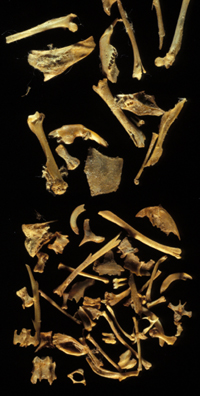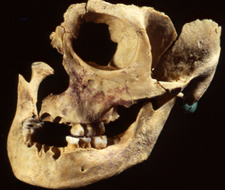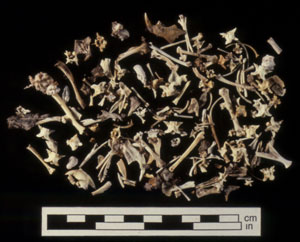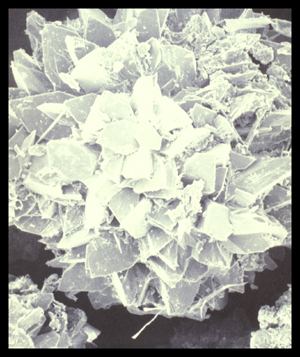Diet, DNA, and Sex Determination

The most direct evidence of prehistoric diet and paleonutrition is provided by the analysis of paleofeces. Paleofeces are a unique resource for analyzing prehistoric diet because their constituents are mainly undigested remains of food items. Because paleofeces represent dietary remains of specific members of a population, they contain direct evidence of dietary intake. Paleofeces also contain important information on health, nutrition, possible food preparation, and overall food economy and subsistence for a group of people.
Recent advances in paleonutritional research allow us to identify diet through analysis of DNA content of paleofeces. DNA content tells us which plants and animals were eaten by prehistoric people, identifies sex of depositor, and assesses biological affiliation and genetic differences of prehistoric peoples. Sex and nutrition determination has also been ascertained through the analysis of fecal steroid content of paleofeces. Because paleofeces contain the dietary remains of specific members of a population, these analyses have the potential to revolutionize prehistoric and modern investigations of gender differences in diet, health and nutrition.



Main Discoveries
(1) Paleonutritional analyses using paleofeces have enabled us to determine that prehistoric people ate a wide variety of plants and animals, some which modern people would not consider as food, such as flowers and rodents.
(2) DNA analysis of paleofeces from Hinds Cave, Texas has revealed that prehistoric people consumed 2-4 different animal species and 4-8 different plant species during a short period of time. The success rate for retrieval of DNA from paleofeces is in strong contrast to that from skeletal remains.
(3) Sex determination using fecal steroid analysis of paleofeces from Mammoth Cave, Kentucky has indicated that only males were exploring and mining in the largest known cave system in the world 2-4,000 years ago.
(4) Sex determination using DNA analysis of paleofeces from Hinds Cave, Texas has indicated that both males and females were using the rockshelters as habitation and latrine areas. Continued study of these samples will allow us to assess dietary differences between males and females in the population to examine health and nutritional implications.
Selected References
Sobolik, Kristin D., 2003. Archaeobiology. Altima Press.
Poinar, H. N., Kuch, M., Sobolik, K.D., Barnes, I., Stankiewicz, A.B., Kuder, T., Spaulding, W.G., Bryant, V.M., Cooper, A. and Pääbo, S., 2001. A molecular analysis of dietary diversity for three archaic Native Americans. Proceedings of the National Academy of Sciences 98(8), 4317-4322.
Sobolik, K. D., 2000. Dietary Reconstruction as Seen in Coprolites. In: The Cambridge World History of Food, Vol. I, K.F. Kiple and K.C. Ornelas (eds.), pp. 44-51, Cambridge University Press, Cambridge.
Sobolik, K.D., Gremillion, K.J., Whitten, P., Watson, P.J., 1996. Sex Determination of Prehistoric Human Paleofeces. American Journal of Physical Anthropology. 101(2):283-290.
Gremillion, K.J. and Sobolik, K.D., 1996. Dietary Variability Among Prehistoric Forager-Farmers of Eastern North America. Current Anthropology 37(3):529-539.
Sobolik, K. D., 1994. Paleonutrition: The Diet and Health of Prehistoric Americans, Center for Archaeological Investigations Occasional Paper Series 22, Southern Illinois University, Carbondale, 321 p.
Sobolik, K. D., 1991. Direct Evidence for the Importance of Small Animals to Prehistoric Diets: A Review of Coprolite
Studies. North American Archaeologist 14(3):227-244.

